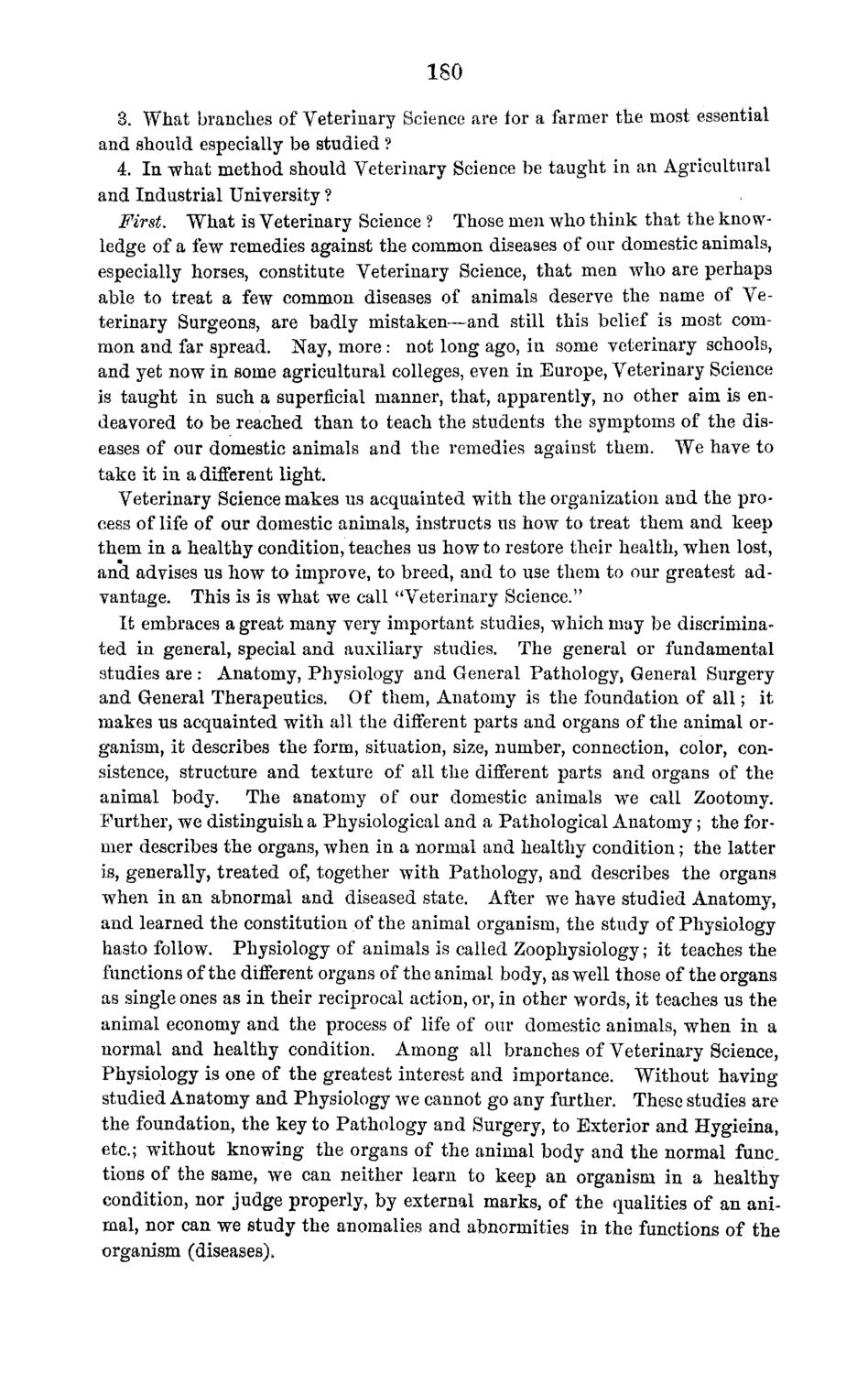| |
| |
Caption: Board of Trustees Minutes - 1870
This is a reduced-resolution page image for fast online browsing.

EXTRACTED TEXT FROM PAGE:
ISO 3. What branches of Veterinary Science are tor a farmer the most essential and should especially be studied ? 4. In what method should Veterinary Science be taught in an Agricultural and Industrial University ? First. What is Veterinary Science ? Those men who think that the knowledge of a few remedies against the common diseases of our domestic animals, especially horses, constitute Veterinary Science, that men who are perhaps able to treat a few common diseases of animals deserve the name of Veterinary Surgeons, are badly mistaken—and still this belief is most common and far spread. Nay, more: not long ago, in some veterinary schools, and yet now in some agricultural colleges, even in Europe, Veterinary Science is taught in such a superficial manner, that, apparently, no other aim is endeavored to be reached than to teach the students the symptoms of the diseases of our domestic animals and the remedies against them. We have to take it in a different light. Veterinary Science makes us acquainted with the organization and the process of life of our domestic animals, instructs us how to treat them and keep them in a healthy condition, teaches us how to restore their health, when lost, and advises us how to improve, to breed, and to use them to our greatest advantage. This is is what we call "Veterinary Science." It embraces a great many very important studies, which may be discriminated in general, special and auxiliary studies. The general or fundamental studies are : Anatomy, Physiology and General Pathology, General Surgery and General Therapeutics. Of them, Anatomy is the foundation of all; it makes us acquainted with all the different parts and organs of the animal organism, it describes the form, situation, size, number, connection, color, consistence, structure and texture of all the different parts and organs of the animal body. The anatomy of our domestic animals we call Zootomy. Further, we distinguish a Physiological and a Pathological Anatomy; the former describes the organs, when in a normal and healthy condition; the latter is, generally, treated of, together with Pathology, and describes the organs when in an abnormal and diseased state. After we have studied Anatomy, and learned the constitution of the animal organism, the study of Physiology hasto follow. Physiology of animals is called Zoophysiology; it teaches the functions of the different organs of the animal body, as well those of the organs as single ones as in their reciprocal action, or, in other words, it teaches us the animal economy and the process of life of our domestic animals, when in. a normal and healthy condition. Among all branches of Veterinary Science, Physiology is one of the greatest interest and importance. Without having studied Anatomy and Physiology we cannot go any further. These studies are the foundation, the key to Pathology and Surgery, to Exterior and Hygieina, etc.; without knowing the organs of the animal body and the normal func. tions of the same, we can neither learn to keep an organism in a healthy condition, nor judge properly, by external marks, of the qualities of an animal, nor can we study the anomalies and abnormities in the functions of the organism (diseases),
| |